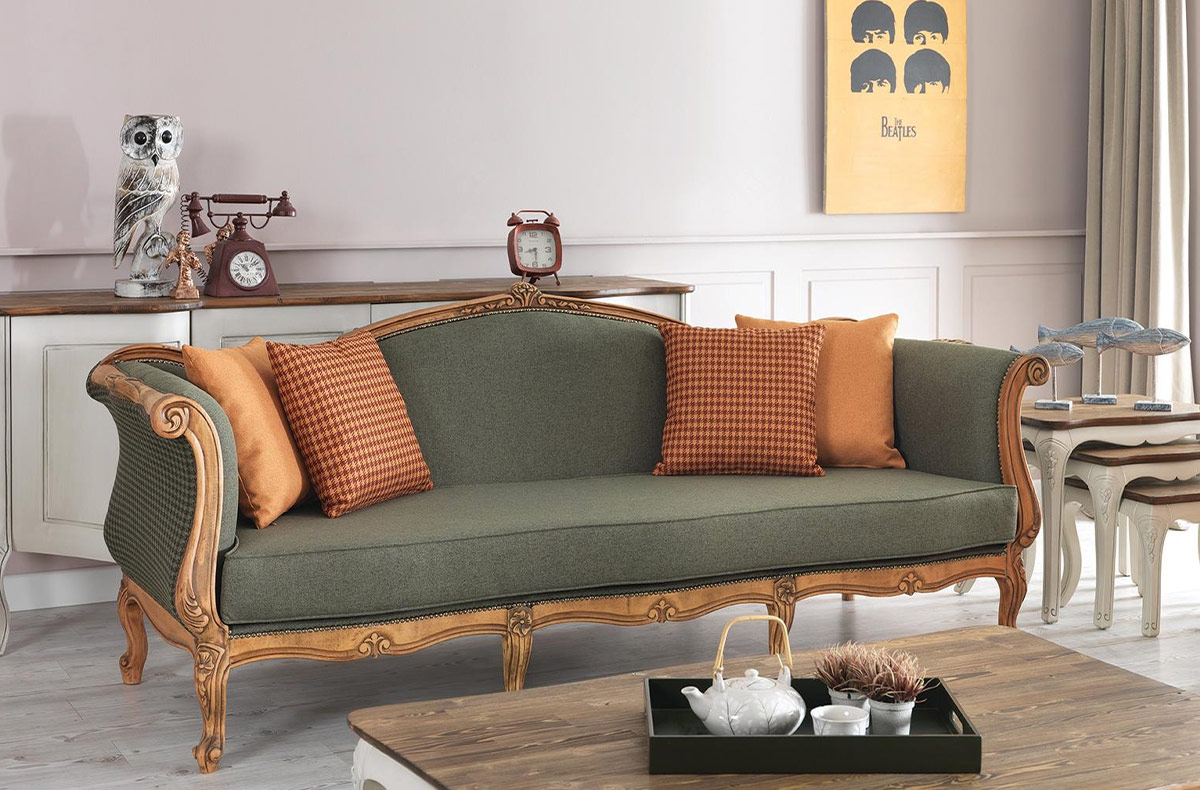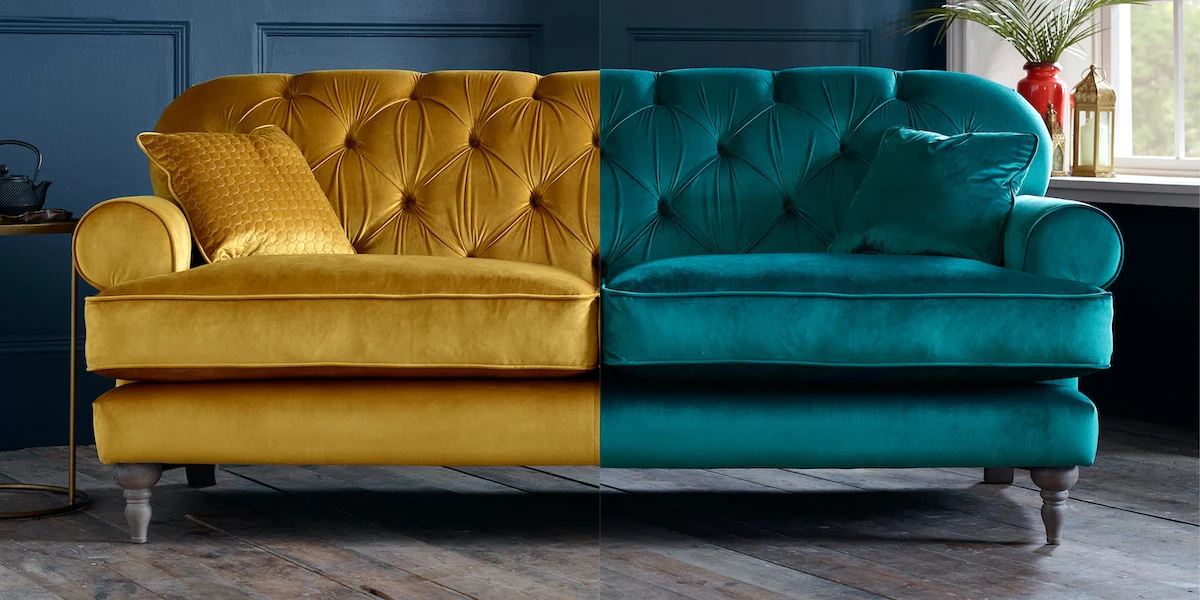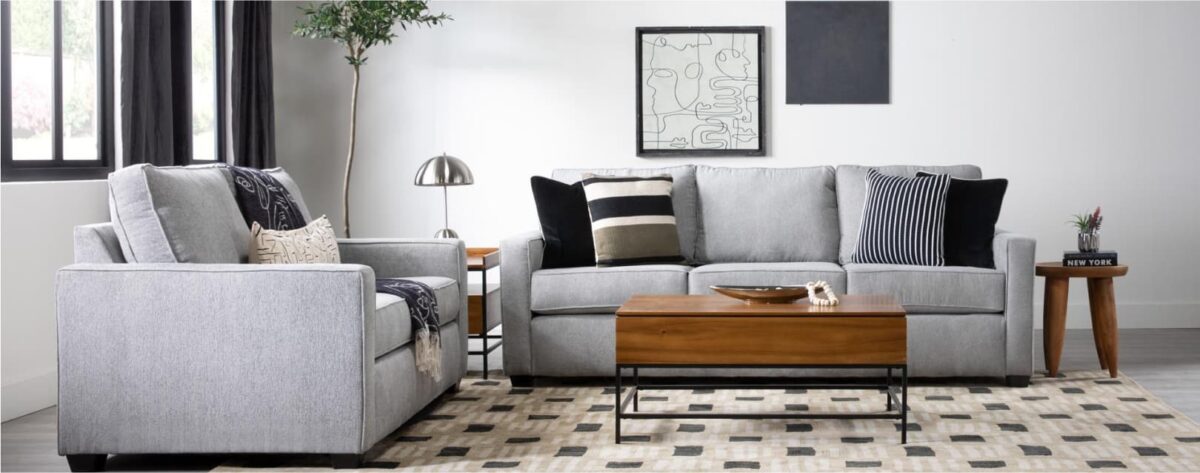Your sofa is the centerpiece of your living room, providing comfort and relaxation. However, accidents happen, and stains can mar the beauty of your beloved furniture. But fear not! With the right knowledge and techniques, you can effectively remove stains from your sofa and restore its pristine condition. In this comprehensive guide, we will explore various types of stains and provide step-by-step instructions on how to tackle them, ensuring your sofa remains spotless and inviting.
Understanding Different Types of Stains
1. Food and Beverage Stains
When it comes to food and beverage stains on your sofa, the key is to act quickly. Whether it’s coffee or tea stains, wine or juice spills, or even grease stains from food, we’ll provide you with effective techniques to tackle these common culprits.
Tackling Coffee and Tea Stains
Coffee and tea stains can be unsightly on your sofa. To remove them, start by blotting the stain gently with a clean cloth or paper towel to absorb as much liquid as possible. Then, mix a solution of warm water and mild dish soap and apply it to the stain. Using a soft brush, gently scrub the stain in a circular motion. Finally, blot the area with a clean cloth to remove the soapy residue.
Removing Wine and Juice Stains
Spills happen, and when wine or juice stains your sofa, it’s important to act fast. Begin by blotting the stain to absorb excess liquid. Then, mix a solution of equal parts water and vinegar and apply it to the stain. Let it sit for a few minutes before blotting the area with a clean cloth. If the stain persists, repeat the process or consider using a commercial upholstery stain remover.
Dealing with Food Spills and Grease Stains
Food spills and grease stains can be challenging to remove from your sofa. Start by scraping off any solid residue with a dull knife or spoon. Then, sprinkle baking soda over the stain and let it sit for a few minutes to absorb the grease. Vacuum the area to remove the baking soda, and if the stain remains, mix a solution of warm water and mild detergent and gently blot the stain. Rinse with clean water and blot dry.
2. Ink and Marker Stains
Ink and marker stains can be stubborn and require special attention. Whether it’s a pen mark or a permanent marker stain, we’ll guide you through the process of removing these tricky stains.
Removing Ink Stains from Pens or Markers
If you accidentally get ink on your sofa, don’t panic. Start by blotting the stain gently to absorb as much ink as possible. Then, dampen a clean cloth with rubbing alcohol and dab the stain, starting from the outside and moving inward. Continue blotting until the stain is no longer visible. Remember to test the rubbing alcohol on a hidden area of the sofa first to ensure it doesn’t damage the fabric.
Treating Permanent Marker Stains
Permanent marker stains can be more challenging to remove, but it’s not impossible. Begin by blotting the stain with a clean cloth or paper towel to remove any excess ink. Then, apply a small amount of rubbing alcohol or nail polish remover to a clean cloth and gently dab the stain. Be cautious not to rub too vigorously, as it may spread the ink further. Rinse the area with water and blot dry.
3. Pet Stains and Odors
If you have pets, you’re likely familiar with the challenges of dealing with pet stains and odors on your sofa. We’ll share effective methods to remove urine stains and odors and provide tips for managing pet hair and dander.
Removing Urine Stains and Odors
When your pet has an accident on your sofa, it’s important to act quickly to prevent the stain from setting. Start by blotting the urine with a clean cloth or paper towel. Then, mix a solution of equal parts water and white vinegar and apply it to the stain. Let it sit for a few minutes before blotting the area with a clean cloth. Repeat the process if necessary. To eliminate odors, sprinkle baking soda over the stain and let it sit overnight. Vacuum the baking soda the next day.
Dealing with Pet Hair and Dander
Pet hair and dander can accumulate on your sofa and cause discomfort for those with allergies. To remove pet hair, use a lint roller or a damp cloth and wipe the surface of the sofa. Vacuuming with a brush attachment can also be effective. To reduce pet dander, consider using a washable sofa cover or regularly vacuuming the sofa using a vacuum cleaner with a HEPA filter.
4. Oil and Grease Stains
Oil and grease stains can be a challenge to remove from your sofa, but with the right techniques, you can restore its appearance. Whether it’s stains from food or cosmetics or body oil stains, we’ll provide you with effective methods to tackle them.
Removing Oil and Grease Stains from Food or Cosmetics
If you spill oil or grease from food or cosmetics on your sofa, don’t panic. Start by blotting the stain with a clean cloth or paper towel to remove as much excess oil as possible. Then, sprinkle cornstarch or baking soda on the stain and let it sit for a few minutes to absorb the oil. Use a soft brush to gently scrub the stain, and then vacuum the area to remove the powder residue. If the stain persists, repeat the process or consider using a commercial upholstery cleaner.
Treating Body Oil Stains
Body oil stains can be challenging to remove as they can accumulate over time. Begin by blotting the stain with a clean cloth or paper towel to absorb any excess oil. Then, sprinkle baking soda or cornstarch on the stain and let it sit for a few minutes. Gently brush the stain to loosen the oil particles, and then vacuum the area to remove the powder residue. If the stain remains, mix a solution of warm water and mild dish soap and gently blot the stain. Rinse with clean water and blot dry.
General Stain Removal Techniques
In addition to specific stain removal methods, there are general techniques that apply to various types of stains. These techniques will help you effectively tackle stains and prevent them from setting further.
1. Blotting the Stain
When a stain occurs, it’s crucial to act quickly to prevent it from setting into the fabric. Grab a clean cloth or paper towel and gently blot the stain to absorb as much liquid as possible. Avoid rubbing the stain, as it can spread it further and make it more difficult to remove.
2. Testing on a Hidden Area
Before using any cleaning products or solutions on your sofa, it’s essential to test them on a small, inconspicuous area first. This test will help ensure that the cleaning product doesn’t cause any damage or discoloration to the fabric. Apply a small amount of the product on the hidden area and wait for a few minutes. If there are no adverse reactions, it should be safe to use on the stain.
3. Homemade Cleaning Solutions
If you prefer natural and homemade solutions, there are several ingredients you can use to create effective stain removers. Vinegar, baking soda, and dish soap are versatile and commonly found in households. You can mix these ingredients to create cleaning solutions and apply them to the stained area. Vinegar works well for many types of stains, baking soda helps absorb odors and grease, and dish soap can break down and remove stains effectively.
Vinegar and Water Solution
One of the simplest homemade cleaning solutions is a mixture of vinegar and water. Combine equal parts of white vinegar and water in a spray bottle. Shake the bottle well to mix the solution thoroughly. Spray the solution onto the stain, and let it sit for a few minutes. Use a clean cloth or sponge to gently blot the stain. Repeat the process if necessary, and then blot with a clean cloth to remove any residue.
Baking Soda and Water Paste
Baking soda is known for its absorbent properties and can be effective for removing odors and stains. Create a paste by mixing baking soda with a small amount of water. The consistency should be thick enough to spread easily but not too runny. Apply the paste to the stain and let it sit for about 15 minutes. Gently scrub the stain with a soft brush or cloth, and then rinse the area with clean water. Blot the excess moisture and let it air dry.
Dish Soap and Warm Water Solution
Dish soap is excellent for breaking down and removing stains. Mix a few drops of mild dish soap with warm water in a bowl. Dip a clean cloth or sponge into the solution and gently blot the stain. Avoid rubbing too vigorously to prevent damage to the fabric. Rinse the area with clean water and blot dry.
Step-by-Step Stain Removal Process
Now that we’ve covered various types of stains and general stain removal techniques, let’s dive into a step-by-step process to effectively remove stains from your sofa.
1. Preparation
Before you begin the stain removal process, gather all the necessary supplies. You’ll need clean cloths or paper towels, a mild detergent, stain removers suitable for your sofa’s fabric, and a vacuum cleaner with a brush attachment. Having these items ready will make the stain removal process more efficient.Start by vacuuming the sofa to remove loose dirt and debris. This step helps prevent rubbing dirt into the fabric while treating the stain.
2. Identifying the Stain
Once the preparation is complete, identify the type of stain you’re dealing with. This step is crucial because different stains may require specific cleaning methods or products. Refer back to the previous sections to determine the appropriate stain removal technique for the specific stain you’re facing.
3. Treating the Stain
Now that you know the type of stain and the suitable cleaning method, it’s time to treat the stain. Follow the instructions outlined in the previous sections to apply the chosen cleaning solution or method to the stained area. Use a clean cloth or soft brush to gently scrub the stain, being careful not to damage the fabric. Work from the outside of the stain toward the center to prevent spreading the stain further.
4. Blotting and Drying
After treating the stain, it’s important to blot the area to remove excess moisture and cleaning solution. Use a clean, dry cloth or paper towel to gently blot the stain. Avoid rubbing the fabric, as it can damage the fibers or spread the stain. Continue blotting until the cloth or paper towel no longer absorbs any moisture.
Finally, allow the sofa to air dry naturally. If you want to speed up the drying process, you can place a fan near the sofa or open windows to increase airflow. Avoid using a hairdryer or applying direct heat to the fabric, as it may cause shrinkage or damage.
Professional Cleaning Options
While the above techniques and methods can be effective for most stains, some situations may require professional upholstery cleaning services. Here are some instances when you should consider hiring a professional and the benefits they offer.
1. Hiring a Professional Upholstery Cleaner
Sometimes, stains may be too stubborn or extensive to be effectively removed with DIY methods. In such cases, it’s best to call in professionals who have the expertise and specialized equipment to tackle even the toughest stains.
When to Consider Professional Cleaning Services
Consider hiring a professional upholstery cleaner in the following situations:
– The stain persists despite multiple attempts to remove it.
– The fabric of your sofa is delicate or requires special care.
– You’re dealing with large or widespread stains that are beyond your capacity to handle.
– You want a thorough and deep cleaning to restore the overall condition of your sofa.
Researching and Selecting a Reputable Upholstery Cleaning Company
When selecting a professional upholstery cleaning company, it’s essential to do your research to ensure you’re choosing a reputable and reliable service provider. Consider the following factors:
– Look for recommendations and read reviews from previous customers.
– Check if the company is licensed and insured.
– Inquire about the cleaning methods and products they use to ensure they are safe for your sofa’s fabric.
– Request a price estimate and compare it with other companies to ensure a fair and competitive rate.
2. Benefits of Professional Cleaning
Professional upholstery cleaning offers several benefits that go beyond stain removal. Here are some advantages to consider:
Thorough Removal of Tough Stains and Embedded Dirt
Professional cleaners have the expertise and specialized equipment to remove even the most stubborn stains and embedded dirt from your sofa. They use professional-grade cleaning solutions and techniques that can effectively lift and extract dirt, grime, and stains, leaving your sofa looking refreshed and rejuvenated.
Restoration of the Sofa’s Original Appearance and Freshness
Over time, sofas can accumulate dirt, dust, and odors that regular cleaning may not fully eliminate. Professional cleaning can restore your sofa’s original appearance and freshness by deep cleaning the fabric and removing any deep-seated dirt or odors. This can help extend the lifespan of your sofa and maintain its overall condition.
Your sofa is an essential part of your living room, and stains shouldn’t detract from its beauty. By understanding different types of stains, employing general stain removal techniques, and following a step-by-step process, you can effectively remove stains from your sofa and restore its pristine condition. However, for particularly stubborn stains or when you want a thorough and deep cleaning, it’s advisable to seek professional upholstery cleaning services. Professionals have the expertise and specialized equipment to tackle tough stains and embedded dirt, ensuring your sofa looks its best.
If you’re in need of professional upholstery cleaning services, Trendeco is here to help. With their experienced team and state-of-the-art cleaning techniques, they can revitalize your sofa and make it look brand new.
We are happy to share with you all the info to remove stains from your sofa. Lets say you still not able to do so. Trendeco has a anti Stain Fabric that can be your solution. You can refurbish again your sofa using Trendeco Anti stain fabric to get rid off all the hussle from cleaning. WhatsApp at Chat with Trendeco. We’re here to assist you every step of the way. Or visit our website Sofa Repair Page
FAQs
FAQs:
1. Can I use bleach to remove stains from my sofa?
Using bleach on your sofa is not recommended, as it can damage the fabric or upholstery. Bleach is a powerful chemical that can cause discoloration or weaken the fibers. It’s best to use milder cleaning solutions specifically designed for upholstery.
2. How often should I clean my sofa to prevent stains?
Regular maintenance is essential to prevent stains from setting in. It’s a good idea to vacuum your sofa regularly to remove loose dirt and debris. Additionally, spot cleaning should be done as soon as stains occur to prevent them from becoming more stubborn.
3. What should I do if the stain doesn’t come out after cleaning?
If the stain persists even after your cleaning efforts, it may be time to consult a professional upholstery cleaner. They have specialized tools and techniques to handle stubborn stains effectively and ensure the best possible results.
4. Can I use a steam cleaner on my sofa?
Steam cleaners can be used on certain types of sofas, but it’s crucial to check the manufacturer’s instructions and the fabric’s care label first. Some fabrics may not be suitable for steam cleaning and may require alternative cleaning methods.
5. How can I prevent future stains on my sofa?
To prevent future stains, consider using sofa covers or throws to protect your furniture from spills and accidents. It’s also a good idea to establish “no food or drinks” rules in the vicinity of your sofa and promptly clean up any spills or messes.
6. Is it safe to use commercial stain removers on my sofa?
It depends on the specific stain remover and the type of fabric on your sofa. Always read the instructions and test the product on a small, inconspicuous area first to ensure it doesn’t cause any discoloration or damage. If in doubt, consult a professional cleaner.
7. Can I remove old stains from my sofa?
While it may be more challenging to remove old stains, it’s still possible to improve their appearance. Using appropriate cleaning methods and products can help lighten the stain and minimize its visibility. If the stain persists, consider seeking professional assistance.
8. What should I do if my sofa fabric is not colorfast?
If your sofa fabric is not colorfast, it means it may bleed or fade when exposed to cleaning solutions or water. In such cases, it’s advisable to consult a professional cleaner who can use specialized methods to prevent color bleeding and preserve the fabric’s integrity.
9. Can I wash my sofa cushions in the washing machine?
It depends on the specific cushion and its care instructions. Some cushion covers may be machine washable, while others may require hand washing or dry cleaning. Always refer to the care label or manufacturer’s instructions for the recommended cleaning method.
10. How can I maintain the overall cleanliness of my sofa?
Regular vacuuming, spot cleaning spills promptly, and practicing good maintenance habits can help maintain the cleanliness of your sofa. Avoid eating or drinking on the sofa, and consider using fabric protectors to prevent stains and spills from penetrating the fabric.



